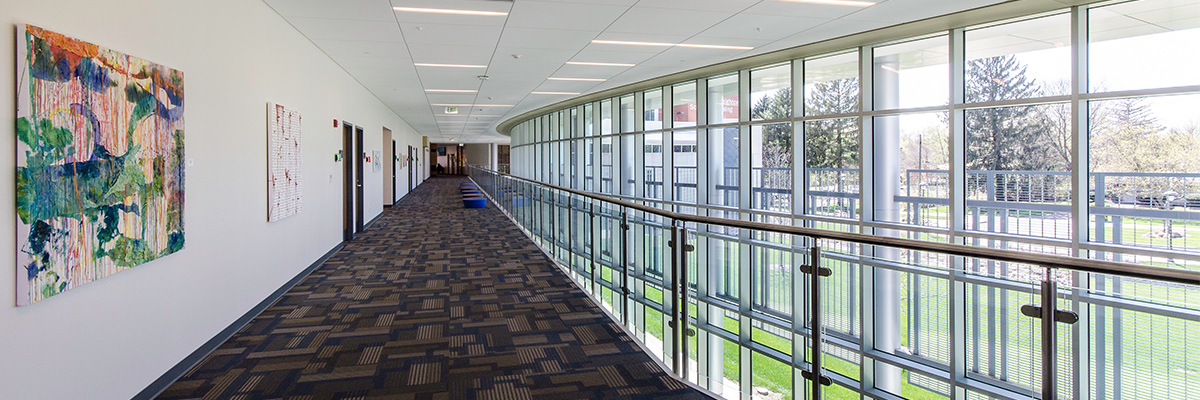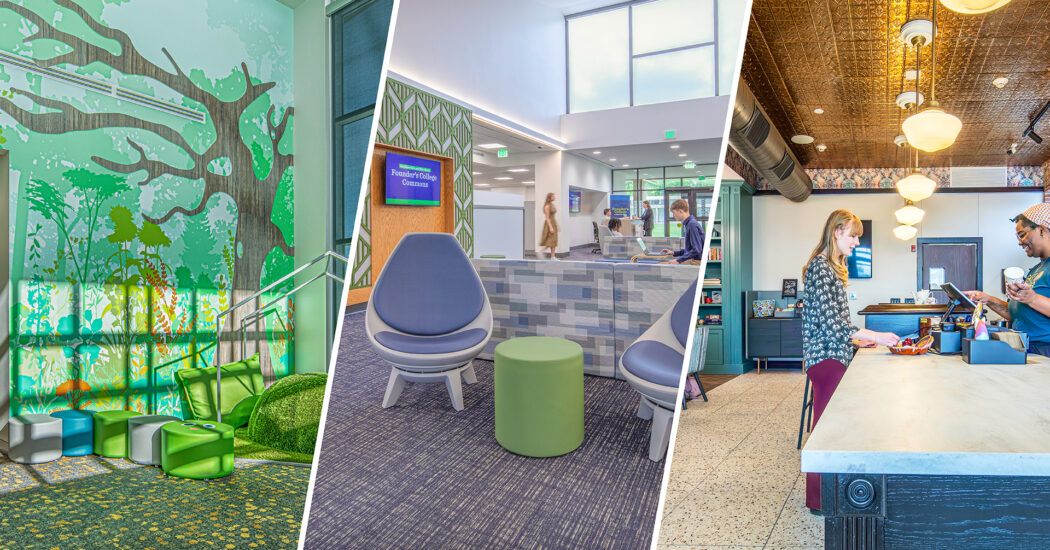The Effects of Natural Daylight
-
Category
Studio-K12, Studio-Higher Ed, Innovation -
Posted By
Schmidt Associates -
Posted On
May 08, 2019

It’s not a secret — it is scientifically proven that we, as humans, thrive best when we have access to sunlight. If you are having a long and stressful day at work, a walk around the block is a good way to clear the mind. Restaurants with outdoor seating tend to be packed during those sunny, 75-degree days. Homes typically include large living room windows that allow sunlight to coming flooding in.
When designing for an academic space, whether K-12 or higher education, keeping this biophilic factor in mind is essential in producing an effective learning environment.
Design considerations:
- Include large, floor to ceiling windows in common spaces like cafeterias/dining halls, library and media centers, hallways on the upper-level floor, etc.

Left: West Lafayette Intermediate School Media Center | Right: Marian University Dining Hall
- Utilize glass walls between interior spaces adjacent to a room or hallway that includes plenty of windows. To add privacy, use clearstory windows or semi-transparent glass that will allow light to pass from space to space.

Clark Middle School – Expandable glass walls between classroom and hallway let light flow throughout a large space
- High, small, frosted windows in gyms/fieldhouses allow natural light to come into the space without resulting in glare on the court. Include windows near cardio machines in campus’ fitness center to give runners a little sense of being outdoors.

Left: Plainfield High School Fieldhouse | Right: DePauw University Lilly Center
- Residence hall bedrooms can feel a little tight and stuffy to students, but providing large windows for daylight to spill throughout common areas will help give them a sense of relief.

Left: University of Indianapolis – Greyhound Village | Right: Ball State University – Schmidt/Wilson Residence Hall
- The second-best option is LED lighting if a space is limited in natural light potential. Sunlight and full-spectrum LEDs expose people to blue light wavelengths, which has a positive impact on our hormonal levels compared to other lighting systems.

Before & After LED Retrofit at Bunker Hill Elementary
Benefits of natural daylight:
- Positively impacts cognitive performance, resulting in better test results, information retention, and productivity levels. The U.S. Department of Education states that classrooms with the most daylighting saw a 20% better learning rate in math and 26% better in reading when compared to classrooms with little to no daylight.
- Sunlight increases levels of serotonin in the brain, which leads to improved moods and overall mental health of students.
- Daylight helps regulate circadian rhythms, reducing stress and enhancing the brain’s readiness to learn.
- Provides opportunity for sensory change, giving students a mental break from what’s going on in the classroom. These short mental breaks help students stay focused and motivated. It is proven that the opportunity to interact with the natural world is particularly helpful to kids with ADD/ADHD, which effects an estimated 1 million children.
Introducing natural daylight into schools for maximum benefits needs to be done in a controlled and responsive manner. Proper building orientation means maximizing southern and northern exposures and minimizing east and west exposures. Worried about the energy costs and thermal comfort issues that come along with a wall full of windows? This is the importance of engineers to help design with tools for energy savings. Exterior shading devices, elements that push daylight deeper into the building, and proper interior window treatments can be incorporated.
If you are interested in learning more about how you can incorporate natural daylight into your existing space or your next projects – give us a call!







